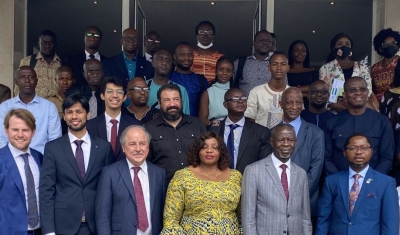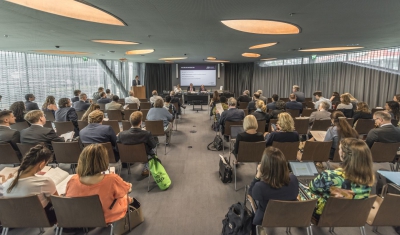New Models of Governance Must Address the Human Rights Challenges Raised by Artificial Intelligence


Ars Electronica
2 March 2020
Artificial intelligence (AI) is bound to enable innovation in the decades to come. On the one hand, AI technologies may be used to improve societal well-being and help fight human rights abuses. On the other hand, AI presents a variety of challenges that can profoundly affect the respect for and protection of human rights. Therefore, it is important to place international human rights law (IHRL) at the centre of discussions about AI governance.
Our New Research Brief Human Rights and the Governance of Artificial Intelligence discusses the opportunities and risks that AI represents for human rights, recalls that IHRL should occupy a central place in the governance of AI and outlines two additional avenues to regulation: public procurement and standardization.
Written by Dr Ana Beduschi, Associate Professor of Law at the University of Exeter, the paper also calls for a more coordinated approach – under the United Nations leadership – that breaks silos and goes beyond sectoral and specialized audiences.
‘This paper manages to clearly present key challenges that AI raises for the promotion and protection of human rights and proposes solid and feasible pathways to ensure that AI does not infringe upon human rights. In an area where the debate is often blurry and the stakeholders do not speak the same language or understand the same concepts, it addresses everyone involved in the regulation of AI: the private sector with notably the technology industry, governments, international organizations, civil society and academia’ underlines Felix Kirchmeier, Manager of Policy Studies at the Geneva Academy and Executive Director of the Geneva Human Rights Platform.
Going Beyond Ethical Frameworks: Placing Human Rights at the Centre of the Governance of AI
Recently, a profusion of initiatives from a variety of actors spanning from the technology industry to international and regional organizations, academia and civil society, have focused on establishing ethical frameworks for the design and implementation of AI solutions.
‘While these are valuable initiatives that propose to identify core ethical principles applicable to AI, IHRL should also be taken into consideration as it provides a legally binding framework for dealing with potential human rights violations’ explains Dr Ana Beduschi.
Two Additional Avenues for Regulation: Public Procurement and Standardization
Regulation is certainly important, in particular concerning data protection and privacy. Nonetheless, new models of governance, placed alongside regulatory frameworks and existing human rights instruments, are also needed.
‘In this paper, I identify two additional avenues to regulation that guarantee that IHRL occupies a prominent place in the governance of AI: public procurement and standardization’ underlines Dr Ana Beduschi.
A Need for Coordinated Efforts
As shown by the multitude of initiatives on AI, most stakeholders tend to operate in silos and produce multiple reports, guidelines, blueprints and statements of principles which often fail to reach beyond sectoral and specialized audiences.
‘The UN should take the lead and bring these stakeholders together, coordinating their efforts to tackle the challenges posed by AI and ensuring that human rights are firmly embedded into the design, development and deployment of AI systems across the globe’ stresses Dr Ana Beduschi.
The Outcome of the Author’s Fellowship at the Geneva Academy
This Research Brief is the result of the research that Dr Ana Beduschi carried out during a three-month fellowship at the Geneva Academy.
‘I am particularly grateful for the opportunity to engage and interact with the Geneva Academy researchers, staff, and experts. The friendly and productive ambience at Villa Moynier allowed me to develop my research on artificial intelligence and reflect on its implications for the protection of human rights in the digital age.’






